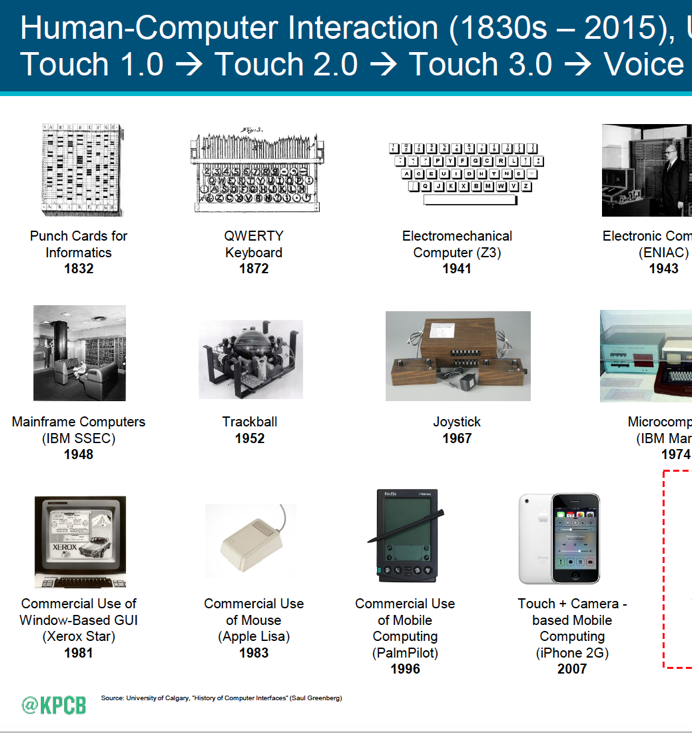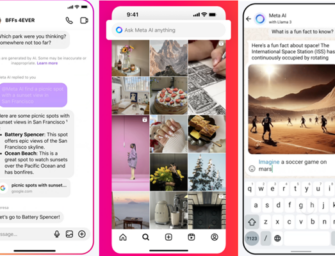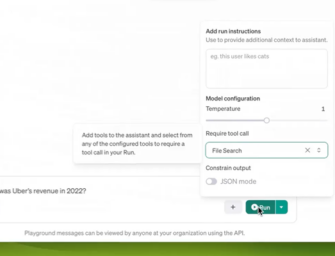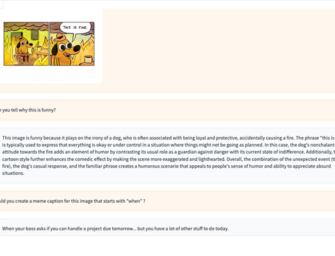The Mary Meeker Index: 10% of Her 2016 Slides Were On Voice
Mary Meeker of KPCB is famous for her annual Internet Trends Report. Since 2004, the report has chronicled key technology trends. It is particularly noted for tracking the rise in mobile, social media and online advertising. Up through 2015, voice was only mentioned sparingly and usually as a simple detail related to another trend:
- 2011: Once – as a detail item buried in a slide
- 2012: Twice – referring to Voice Control on Xbox, for push-to-talk and voice messaging
- 2013: Three times – referring to the expectation of voice control for wearables, the use of voice messaging on WeChat, and again related to push-to-talk
- 2014: Twice – referring to voice controlled television remotes and voice search on Google
- 2015: Once – referring to voice calls
You see a trend of rising and then falling attention. Then, something dramatic happened in 2016. More than 10% of Ms. Meeker’s 213 slide report was dedicated to voice. And the chart below doesn’t do the change full justice. In only one of the nine examples between 2011 and 2015 was the mention of voice the primary focus of the slide. Voice was most often a supporting or ancillary point or related to human-to-human communication. The 22 slides in 2016 all made voice interaction with machines and content the central premise.
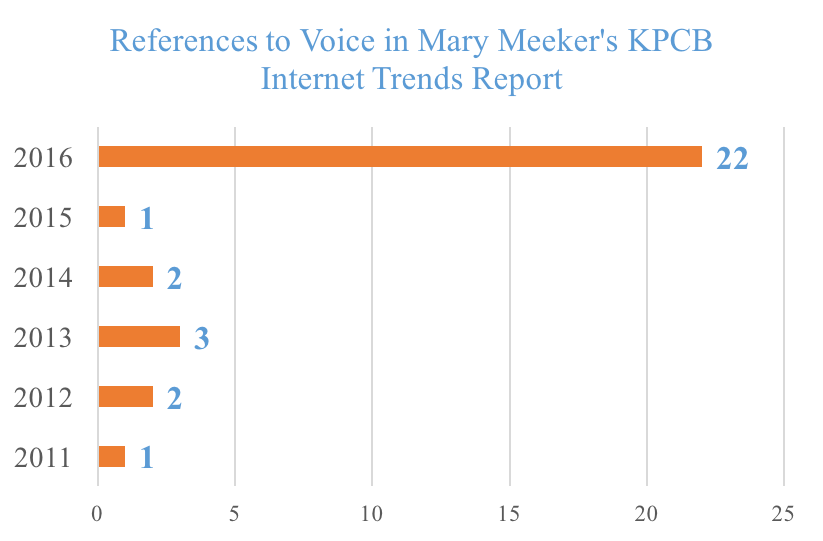
From Absence to 10% In One Year
In 2011, there was a graphic about the evolution of user interfaces that showed the evolution from Keyboard and Mouse in a Graphical User Interface to what Meeker referred to as a Natural User Interface that relied on Touch, Voice and Gesture.
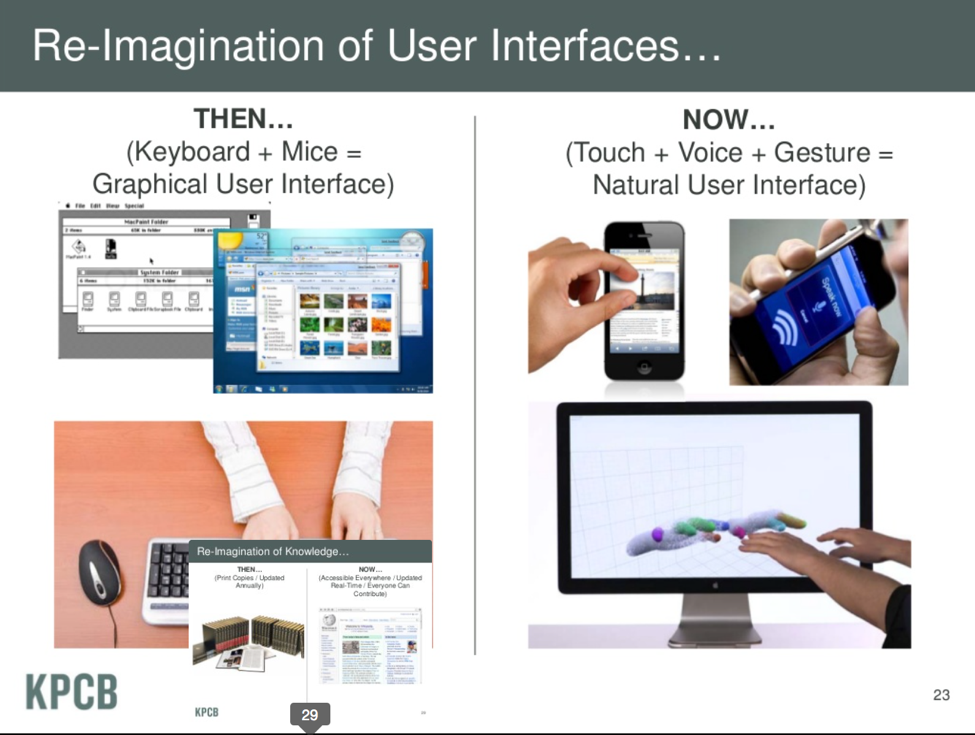
Source: Internet Trends Report 2011
The 2016 report included a more detailed report on human-computer interfaces that showed an evolution to voice on mobile with Siri and then to ambient connected devices such as the Amazon Echo.
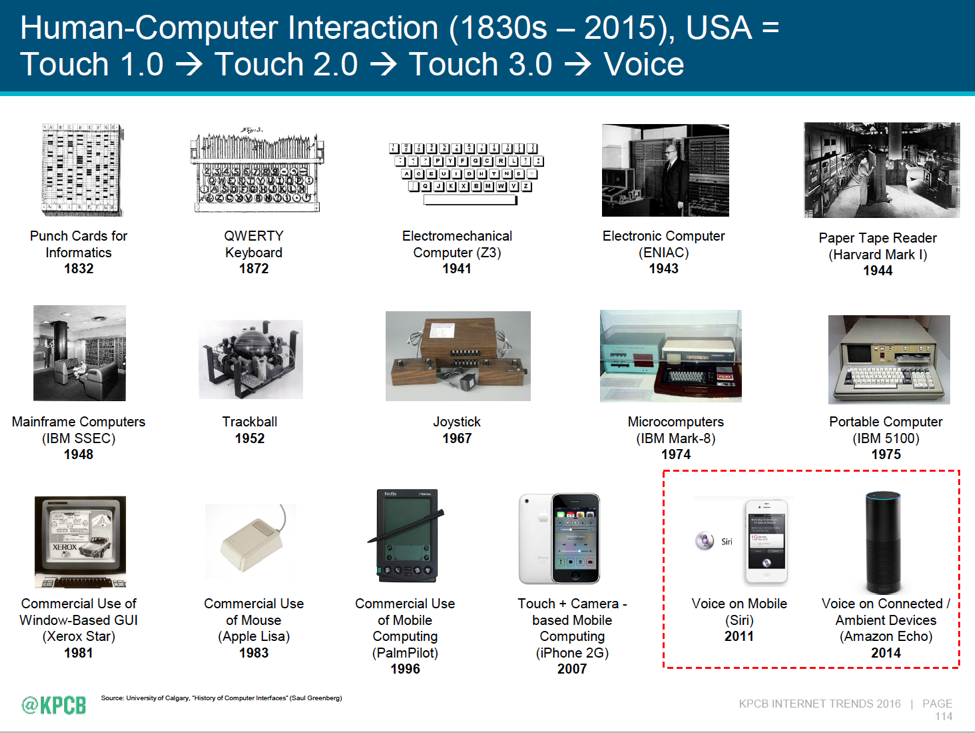
What Happened? The Amazon Alexa and Baidu Proof Points.
The big catalyst is that Amazon started shipping a lot of Echo units that provided access to the Alexa voice service. The total was four million between November 2014 and April 2016. This volume significantly outpaced analyst projections and the user feedback was positive. Alexa adoption provided a proof point that consumers were interested in voice interfaces for ambient computing.
However, the growing interest is also a function of a substantial improvements in speech recognition accuracy, voice response latency and performance of the voice assistants. Alexa is but one example. Meeker provides data from Baidu, Google and Hound related to word accuracy improvements and nearly vertical growth in speech recognition daily use on Baidu. Voice interaction options are expected to rise further as Google and Apple introduce products to compete with the Amazon Echo this fall.
Mary Meeker Voice Trends Excerpt
You can watch the section of Mary Meeker’s presentation related to voice in the YouTube video below. One point to keep in mind is her closing quote.
“In the computing industry, inflection points are typically only obvious with hindsight. So ask the question – iPhone sales may have peaked in 2015 per most analyst estimates that are out there while Amazon Echo sales are just beginning to take off. Food for thought.”
-Mary Meeker, KPCB | Code Conference


